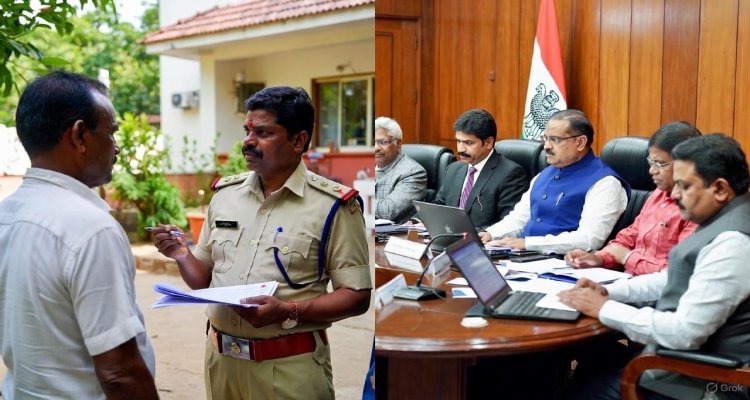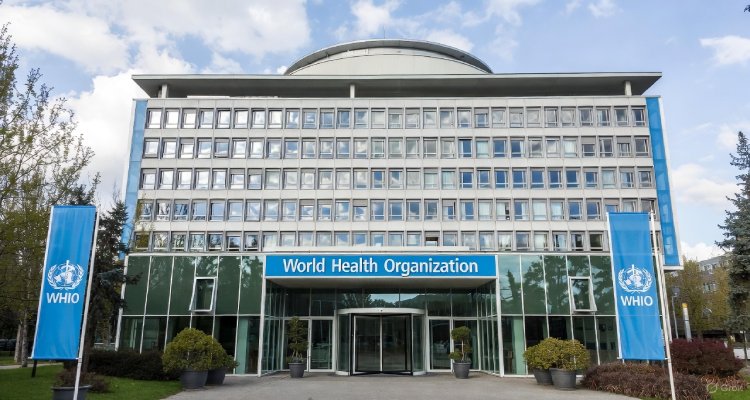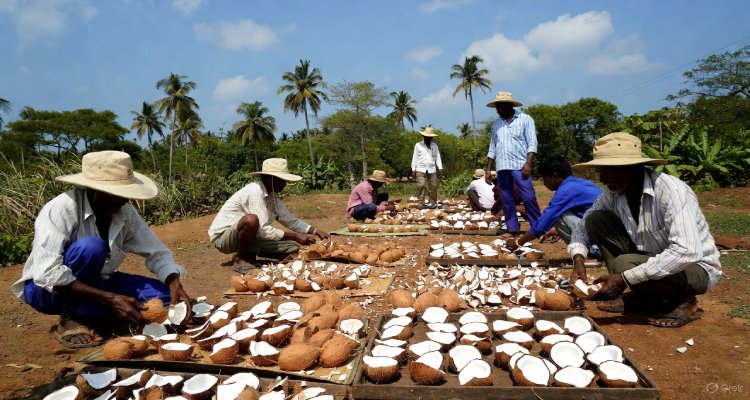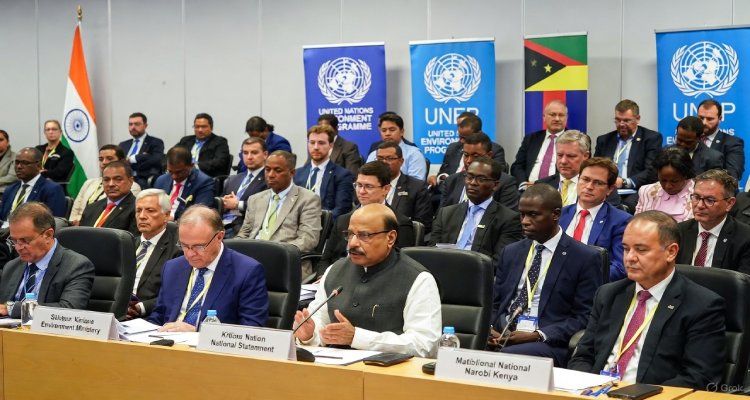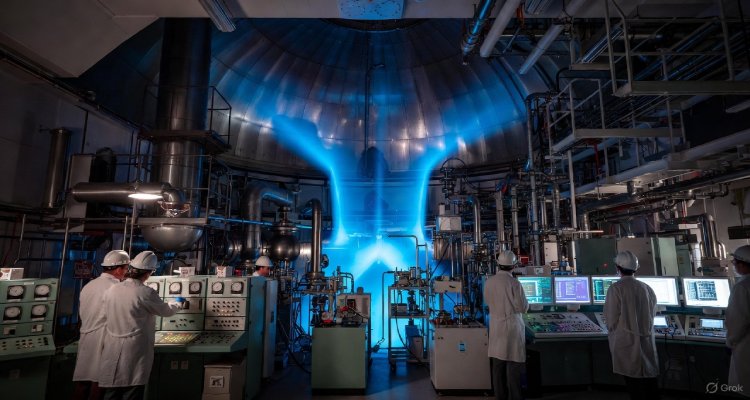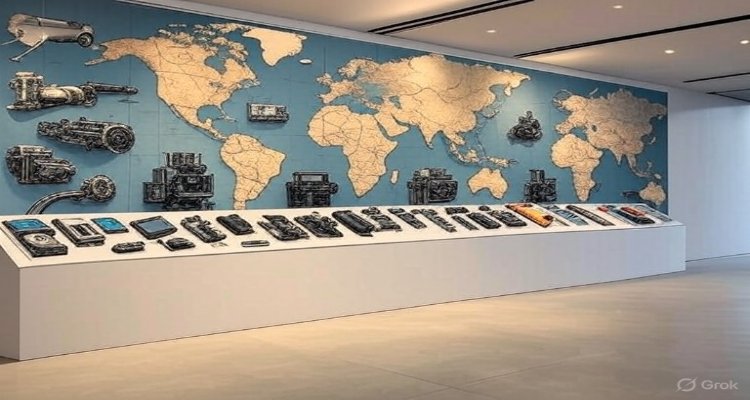From $70B to $115B: How EEPC India is Shaping the Future of Engineering Exports
EEPC India plays a pivotal role in boosting India’s engineering exports, bridging global markets with Indian producers, and empowering SMEs to compete worldwide.
Introduction: Engineering India’s Global Ambitions
When President Droupadi Murmu addressed the platinum jubilee celebrations of the Engineering Export Promotion Council (EEPC) India on September 8 in New Delhi, she underscored a striking achievement—India’s engineering exports have surged from $70 billion to over $115 billion in just a decade. This growth is not merely a statistic; it reflects India’s expanding role in global trade and the critical role EEPC India plays in making it possible.
Context & Background: A Bridge to Global Markets
Established in 1955 under the Department of Commerce, EEPC India was conceived as a dedicated body to connect Indian engineering enterprises with international markets. Operating as a non-profit company under Section 25 of the Companies Act, 1956, its mission has always been clear—enable Indian engineering firms to navigate global complexities and secure a stronger foothold in international trade.
Over the decades, India’s export destinations have transformed. Once heavily dependent on a handful of nations, the country now boasts a diversified export map, a shift made possible by institutions like EEPC India that continuously work to align domestic production with global demand.
Main Developments: Expanding India’s Engineering Footprint
EEPC India functions as both a trade facilitator and industry advocate. Its contributions include:
- Membership Base: With over 13,000 members, from SMEs to large corporations, the council represents the entire spectrum of Indian engineering exporters.
- Certification Role: It acts as the nodal agency for issuing Registration-cum-Membership Certificates (RCMCs), a key requirement under India’s Foreign Trade Policy.
- Wide Presence: Headquartered in Kolkata, EEPC India maintains regional offices in Delhi, Mumbai, Chennai, and Kolkata, along with sub-regional hubs in Ahmedabad, Bengaluru, Hyderabad, and Jalandhar. To enhance accessibility, it has also opened chapters in 15 Tier-II and Tier-III cities.
- Skill Building: From market research to capacity-building workshops, EEPC equips exporters with tools to meet international quality benchmarks.
- Global Showcases: Through strategic collaborations and global trade exhibitions, it enables Indian engineering firms to present innovations to new markets, expanding their global reach.
Its motto, “Engineering the Future,” captures this spirit of growth and innovation.
Expert Insight: Voices from Industry and Leadership
During the jubilee celebration, President Murmu emphasized that EEPC India serves as a “bridge between international markets and Indian producers.” She urged the council to continue its efforts in integrating Indian SMEs into global value chains, a move seen as essential for sustaining export growth.
Industry experts echo this view. Trade analysts point out that EEPC’s structured interventions—such as standardization programs and targeted overseas marketing—have been pivotal in enabling India to move from a low-cost supplier to a competitive player in specialized engineering segments like automobile components, industrial machinery, and high-tech equipment.
Impact & Implications: Shaping India’s Export Future
EEPC India’s role is not confined to immediate export promotion; it is strategically tied to India’s larger economic aspirations. By supporting SMEs, enhancing skill levels, and fostering global partnerships, the council is helping to position India as a manufacturing and engineering hub.
The implications are vast:
- For SMEs: Easier entry into global markets, exposure to international buyers, and training to meet global standards.
- For Large Corporates: Opportunities for diversification and deeper penetration into advanced economies.
- For India’s Economy: Contribution to foreign exchange reserves, job creation, and stronger positioning in global trade negotiations.
Looking ahead, EEPC India’s challenge will be to sustain momentum amid rising global competition and ensure that Indian engineering firms not only meet but set international benchmarks.
Conclusion: Engineering the Next Chapter
For 70 years, EEPC India has been more than an institution—it has been the backbone of India’s engineering export story. From its modest beginnings in 1955 to its current stature as a global trade facilitator, the council has empowered businesses, strengthened India’s global brand, and built pathways for future growth.
As President Murmu noted, the world of engineering exports is evolving rapidly, and EEPC India’s role will be central in ensuring that Indian producers don’t just keep pace but lead the way. With its motto “Engineering the Future”, EEPC India continues to be a catalyst in shaping India’s journey toward becoming a global engineering powerhouse.
Disclaimer: This article is intended for informational purposes only. The content reflects publicly available data and should not be construed as financial or trade advice.



